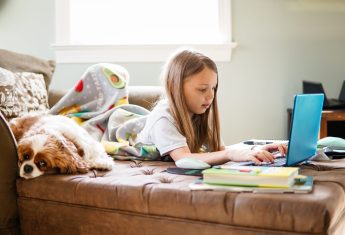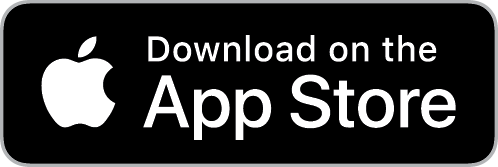Primary 7 - Second Level Numeracy
Online Numeracy Lessons for Primary 7 Students in Scotland.
Primary Seven numeracy and mathematics lessons start with Place Value - numbers up to and beyond 1,000,000. Pupils learn to use place value counters to display a seven-digit number. They learn to identify and state the value of each digit in numbers. They learn to read and write numbers up to and beyond 1,000,000 and to compare and order seven-digit numbers.
We teach rounding numbers to the nearest 10, 100, 1,000 and 10,000. Pupils learn what rounding is and how it is used in our lives. They learn to identify whether to round up or down by looking at the previous digit. They learn to round to the nearest 10, 100, 1,000 and 10,000 and can estimate the position of a number on a number line.
We teach numbers to three decimal places. Pupils learn how many thousands are in a hundredth. They can use place value counters to display a number to three decimal points. They learn to identify and state the value of each digit in numbers. They learn to read and write numbers to three decimal places and to compare and order numbers to three decimal places.
We teach negative numbers. Pupils learn how negative numbers are used in real life. They learn to use a labelled number line to find differences in amounts involving negative numbers. They learn to use an empty number line to find differences in amounts involving negative numbers and can add and subtract numbers above and below zero.
We teach adding five-digit numbers. Pupils will recall words that are related to addition. They will learn to partition a five-digit number. They learn to use partitioning strategy to add numbers and to use the column method strategy to add numbers.
We teach subtracting five-digit numbers. Pupils learn the value of each digit in a five-digit number. They learn to subtract a number line to count back and can subtract using the column method.
We teach adding decimals up to two decimal places. Pupils learn the value of each digit in a number up to two decimal places. They learn to use a number line to add numbers. They learn to use partitioning to add numbers and to use the column method to add numbers.
We teach subtracting decimals up to two decimal places. Pupils learn the value of each digit in a number up to two decimal places. They learn to use a number line counting on to find the difference and to use the column method to subtract numbers.
We teach how to multiple and divide whole numbers by 10, 100, 1,000. Pupils learn to find the missing number in a multiplication and division problem.
We teach how to multiply and divide decimals by 10, 100 and 1,000. Pupils learn to find the missing number in a multiplication and division problem.
We teach how to multiply two-digit numbers by two-digit numbers. Pupils learn to partition numbers up to four digits. They learn to multiply by multiples of 10, 100 and 1,000. They learn to multiply using the grid method and to answer multiplication word problems.
We teach how to divide three-digit numbers by two-digit numbers. Pupils learn what the dividend, divisor and quotient are. They learn to create multiplification facts for the divisor. They learn to use a number line to divide and to find a remainder. They learn to answer division word problems.
We teach how to divide decimals up to two decimal places by a single-digit number.
Pupils learn the value of digits in numbers with two decimal places. They learn what the dividend, divisor and quotient are. They learn to place numbers onto the division bar. They learn to divide up to two-digit numbers by a single digit and to carry on the remainder.
We teach pupils BODMAS. They learn the order of operations using BODMAS. They learn to find square numbers, cube numbers and square roots. They learn to multiply, divide, add and subtract. Pupils learn to answer maths equations using BODMAS.
We teach equivalent fractions, decimal fractions and percentages. Pupils learn to label the numerator and denominator. They can find equivalent fractions. They learn to convert tenths to decimal fractions and to convert hundredths to decimal fractions. They learn to calculate fractions as a percentage.
We teach simplifying and ordering fractions. Pupils learn to find factors and to identify the highest common factor. They learn to simplify fractions, find equivalent fractions and to order fractions with denominators of the same multiple.
Our money lessons continue with calculating discounts. Pupils learn fractions as percentages, to explain what a discount is and to calculate fractions and percentages of amounts.
We teach how to calculate profit and loss. Pupils learn what profit and loss is and can calculate both from the purchase and selling price.
Our time lessons continue with speed, dstance and time. Pupils learn the link between speed, distance and time and the units of measurement for speed, distance and time. They learn to calculate distance using speed and time. They learn to calculate speed using distance and time and they learn to calculate time using distance and speed.
We teach converting measurements using decimal notation. Pupils learn units of distance, volume and weight. They learn to convert centimetres to metres and vice versa. They learn to convert litres to millilitres and vice versa. They learn to convert kilograms to grams and vice versa.
We teach how to find the area of a right-angled triangle. Pupils learn the units of area of the triangle, what it is measured in. They learn the formula to find the area of a rectangle and the formula to find the area of a right-angled triangle. They learn to calculate the area of right-handed triangles.
We teach calculating of cubes and cuboids. Pupils learn what the volume is and what the units of volume are. They learn the formula for finding the volume and to calculate the volume of cubes and cuboids.
We teach complementary and supplementary angles. Pupils learn the size of right and straight angles and to explain what complementary and supplementary angles are. They learn to subtract numbers from 90 and from 180 and find missing angles.
We teach scale drawings. Pupils learn to explain what a scale drawing is. They learn to convert scaled measurements into actual measurements and vice versa.
We teach co-ordinate grids with negative numbers. Pupils use a four-quadrant co-ordinate grid and learn what the origin is, what the x and y axes are and to plot points on the grid.
We teach pie charts. Pupils learn to explain what a pie chart is and to read information from a pie chart. They learn to find percentages from fractions, to find angles from fractions and to display data in a pie chart.
We teach simple algebraic equations. Pupils learn to explain what an equation is. They can add, subtract, multiply and divide. They learn to calculate a missing number, state what algebra is and find the value of a letter.


"It's bright and colourful, easy to read, and extremely easy to use unlike most textbooks or online learning websites" Daisy, S3 PupilSign Up & Learn Today

